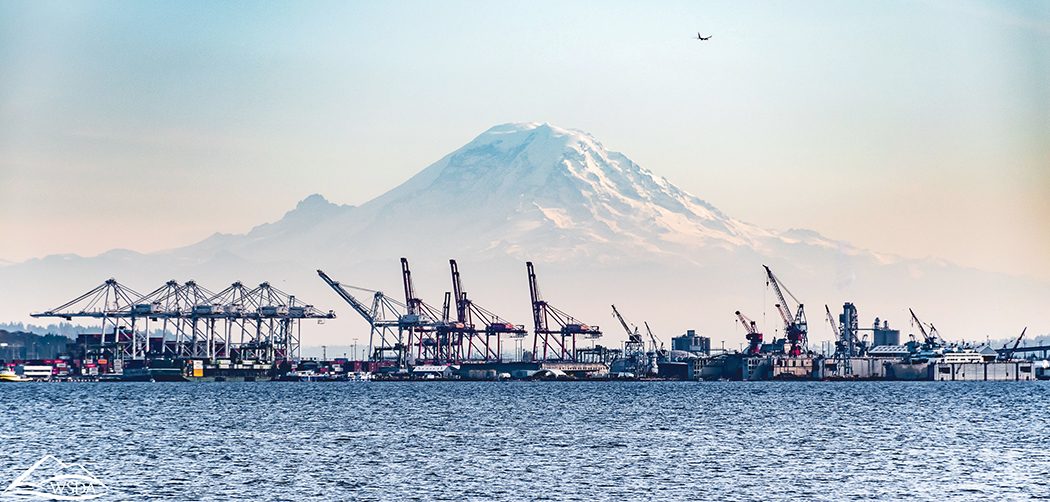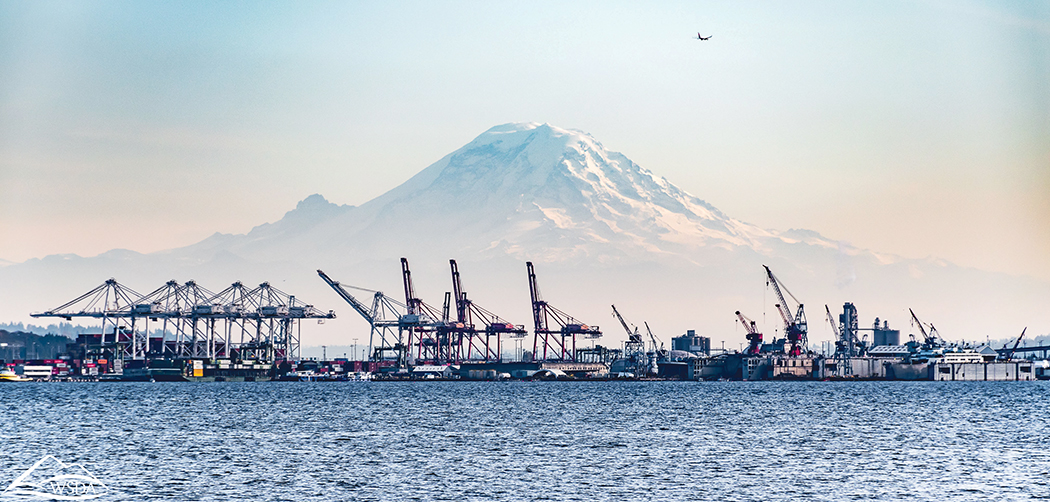
Home » To market: Exporters turn to new trade agreements, Zoom
To market: Exporters turn to new trade agreements, Zoom

June 15, 2020
Washington’s agricultural exporters faced brutal headwinds in 2019 and they are facing them again in 2020.
Trade wars, retaliatory tariffs targeting the state’s most iconic crops and a new Pacific Rim trade alliance that didn’t include the U.S. marred the 2019 season, driving producers to seek new markets in Vietnam, the Philippines and Indonesia, among others.
The Covid-19 crisis brings a fresh set of challenges in 2020 — shifting demand and consumption patterns, difficult shipping conditions, potential farm worker shortages and little ability to meet prospective buyers face to face on trade missions.
The good news is Washington weathered 2019’s trade storms surprisingly well. Trade increased in 2019, according to preliminary figures released in mid-May by the Washington Department of Agriculture.
A total of $15.4 billion of agricultural goods shipped from Washington ports in 2019.
Washington-grown crops represented a little more than $7 billion of the total, topping 2018’s $6.67 billion and 2017’s $6.8 billion. The $15.4 billion figure includes products such as rice, wheat, corn and soy that are cultivated outside of the state but pass through Washington ports on their way to foreign markets.
“The big story for last year was that, miraculously, our ag industry was able to essentially maintain our exports by finding new markets,” said Rianne Perry, manager of international marketing for the state Department of Agriculture.
She expected to finalize the 2019 export figures by late May, after the deadline for this publication.
The positive news was welcomed in the export industry, even though not all commodities benefited. Commodities such as soybeans had a rough year, said Andrew Anderson, executive director of the Western United States Agricultural Trade Association (WUSATA), which is based in Olympia.
“Trade was surprisingly good considering all the tariff issues and renegotiating of NAFTA and all the things going on. It turned out to be a pretty good year for most people,” he said.
Perry said there was more surprising news in 2019. China, the focus of much of the trade conflict, remained the state’s third largest trade partner after Canada and Japan.
China, India and others retaliated against U.S. tariffs designed to protect the steel and aluminum industries by targeting apples, cherries and other Washington-grown products with steep tariffs. Perry expected China to drop in the rankings and was surprised when it held its place, even as overall numbers dropped.
Tariffs were not the only cloud in 2019.
The North American Free Trade Alliance was renegotiated as the agreement between the United States, Mexico and Canada, or USMCA, and takes effect this summer.
USMCA and other agreements are critical to reviving the economy, U.S. Rep. Dan Newhouse, R-Sunnyside, said in a May 20 call organized by the Association of Washington Business. He cautioned that it will take time for markets to return.
“As our economy has suffered, other countries have as well, so it’s not going to be turning on the light switch and all of the sudden the trade is going to be there,” he said.
The USMCA was a win.
But agriculture is potentially affected by the Comprehensive and Progressive Agreement for Trans-Pacific Partnership, which took effect at the end of 2018. The U.S. is not a party to the agreement, which lays out favorable trade terms for 11 participating countries, including Australia, Canada, Chile, Japan, Mexico and others.
President Donald Trump, fulfilling a campaign promise, withdrew the U.S. from its predecessor, the controversial Trans-Pacific Partnership, in January 2017. It was signed but not ratified during the Obama administration.
Perry said a later bilateral agreement between the U.S. and Japan mitigated some of the concerns about the impact on U.S. wheat exports to Asia. Successive phases of the agreement will help further.
Anderson said there still are issues as American exporters face steeper tariffs than countries that are part of the new agreement.
Perry said Washington exporters were able to pivot from China to emerging markets last year.
Vietnam, Indonesia and the Philippines have rising middle class markets which translates to a growing appetite for American products. Washington-grown, Washington-produced products such as apples, cherries, french fries, beef and blueberries are finding new markets.
“They’ve started buying our products,” she said.
Anderson of WUSATA said the trade wars may have helped U.S. exports find new markets by lowering prices in a way that appeals to the emerging middle classes in developing countries.
“One of the first things they spend that money on is better food,” he said.
The chaotic trade battles of 2019 delivered a painful if useful message on the value of a diversified customer base. Exporters do well to cultivate new, emerging markets, but China is too big to ignore, Perry said.
“Nobody is willing to stop exporting to China,” she said.

The 2020 season will pose as many if not more challenges.
The U.S. Department of Agriculture raised its 2020 export forecast by $500 million, to $139.5 billion, in February.
Exports to China alone were expected to climb to $14 billion, an increase of $3 billion over the November forecast, released prior to the pandemic.
Soybeans, wheat and poultry were behind the export increases. Soybeans pass through Washington but are generally not grown here. Soft white wheat is a key Washington crop but a small part of the national production.
“A slowdown across the Eurozone, declining growth rates in China and the recent damaging global impact of the Covid-19 outbreak is expected to dampen growth prospects worldwide,” the USDA said.
The fallout is creating both heartburn and some opportunity in the Mid-Columbia and elsewhere.
The Franklin County Farm Bureau reported asparagus farmers had a strong spring both in terms of having enough cutters to bring in the harvest and strong demand from customers dining at home. Washington-grown asparagus faced less competition from Mexico and Peru because of shipping slowdowns.
But the Northwest potato industry is reeling from a striking reversal in demand for frozen french fries, the main outlet for Washington-grown potatoes. In March, processors advised growers to plant all their seed potatoes. A week later, they called to cancel contracts, leaving thousands of acres planted but with no buyer.
What had been a shortage quickly became a glut that led to high-profile potato giveaways and reports that farmers were either plowing under crops or going for broke on the hope they can sell their crops on the open market later.
Lamb Weston, the Eagle, Idaho-based frozen potato giant, supplied useful insight into how the pandemic played out for its Chinese operations during an earnings call in April.
Executives said demand in China fell by half during the worst of the pandemic stay-home crisis. As restrictions eased, demand revived to 70 percent. They cautioned against reading too much into the revival, but it offers a hopeful view that french fry demand will come back as economies reopen.
Northwest sweet cherries are another crop that relies on foreign markets, including China. The harvest typically begins in June. Exports will depend on steady growing conditions and the availability of workers to pick a crop on track to produce 20 million boxes in 2020, according to the Northwest Tree Fruit Association.
Sweet cherries are Washington’s sixth most valuable crop, with a production value of more than $500 million.
Shipping to customers in Asia and China hinges on getting them to customers within days of being picked because they are so highly perishable. Cherries travel by air and will depend on a revival of air travel.
Blueberries could have a strong year. China and the Philippines both granted market access, which could translate into more demand for another signature Washington product.
“I think our fresh blueberries are going to have a good season,” Perry said.
For WUSATA, the inability to meet face to face with importers and distributors is the biggest challenge. Clients still worry about getting paid for products they ship overseas, but in-person contact is their top worry, Anderson said.
Exporters with established relationships should fare well. But for those trying to break into new markets, the face-to-face meeting is invaluable.
How, he said, do you sell a customer on your barbecue sauce if you cannot meet in person?
WUSATA has canceled trade missions but is facilitating virtual meetings, as is the state Department of Agriculture.
“I think I’ve been on more Zoom meetings in the past week than I have been in the last three years combined,” Anderson said.
Washington is one of the most trade-dependent states in the U.S. and agriculture plays a big role. Agricultural exports are its second largest export category, after airplanes.
Fish and seafood are the state’s top export, with Canada, China and Japan being the top three buyers. Frozen french fries are next, with an export value of more than $750 million. Japan, South Korea and China are the top buyers.
Apples, soft white wheat and hay, worth $720 million, $532 million and $500 million, respectively, round out the top five exports, according to the state agriculture department.
Editor's note: This story was corrected June 26 to reflect that Japan is Washington's second-largest trading partner after Canada and ahead of China.
Focus Magazine Agriculture + Viticulture
KEYWORDS june 2020





